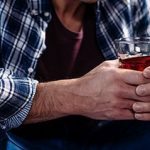
Here’s one reason why past or current smoking may handicap you if you are battling breast cancer: New research suggests that nicotine promotes the spread of the disease to your lungs. Smoking is known to increase the risk that breast cancer will spread, which lowers the survival rate by one-third at diagnosis. But the role of nicotine in the spread of breast cancer to the lungs has been less clear. To learn more, researchers studied almost 1,100 breast cancer patients. They found that current smokers and former smokers had higher rates of breast cancer spread to the lungs than those who never smoked. In studies of mice, researchers found that nicotine fosters that spread. And this was true even after no exposure to nicotine for 30 days. That suggests there’s an ongoing risk for breast cancer patients who are former smokers, according to the team from Wake Forest School of Medicine in Winston-Salem, N.C. Their findings were published online Jan. 20 in the journal Nature Communications. “Our data shows that nicotine exposure creates an environment in the lungs that is ripe for metastatic growth,” said lead study author Kounosuke Watabe, a professor of cancer biology at Wake Forest. Long-term exposure to nicotine creates an “inflammatory microenvironment” in the lungs. That attracts immune cells called neutrophils, which release a protein that encourages the spread of cancer,… read on > read on >



















-300x200.jpg)













